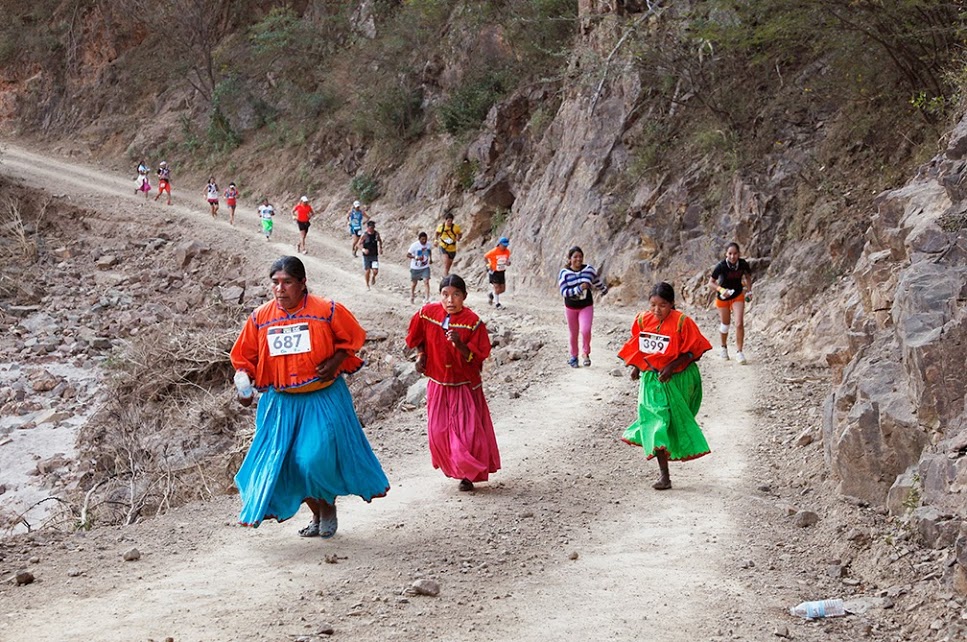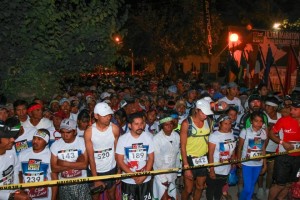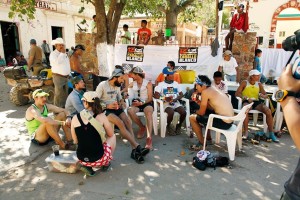Scholar got schooled


The Rarámuri, 500 strong and surging with energy, shot off into the predawn. They left us gringos reeling in their wake. Within a handful of minutes, I was left behind running at race pace, abreast teens in sandals and denim jean pants. Kids and grandparents jockeyed back and forth for position with me on the road out to Guadalupe.
Somehow I had apparently not comprehended nor fully respected all of what I’d read about the Rarámuri. Maybe it is that I can easily search and compare my performances against those of my American and European counterparts. With the Rarámuri, I knew few names and no faces. Sure, a few could outpace me, I thought, “I will have to focus on racing the Americans and Euros.” Little did I know that the Rarámuri could give anyone a thrashing on the trails.
Nearly all the Rarámuri jumped off the starting line as if in a 5,000m race. I urged myself to not get sucked into a sprint game. Those more veteran warned of this race style. “You’ll see them take off. Five miles later they’ll be walking.” I stuck to my race plan and pace. Metronomic and even with little flair and Prefontaine. The miles flew by as I remained in awe that after ten miles I was still in nearly 60th position.

A recurring pattern has manifested in my athletic life. I hunker down each winter and train hard. Then, come early spring, I find some torturous way to check my ego. In fact, I’ve started the last few seasons by giving my ego a good kick in the teeth. My daydreaming, race scheming and visualizing revolved around me, a myopic view excluding the Rarámuri. They were the unknown force that, in their unassuming and gentle way, helped me obtain that much needed humble start to the season. Rarámuri humility masks a fierce intensity in racing.
Their unassuming way was the greatest aid in the growth of my own humility. Families had walked from all over the Barrancas to reach Urique. Some had walked farther than the race itself. They arrived in the clothes they would race in, the same clothes they live in. This nuance, despite being in plain view, was an ‘Aha!’ moment for me. Running is life, life is running. It is integral and seamless with their worldview.
They ran as they came. No hydration vests or energy products. The men ran. The women ran. The children ran. In fact, over 500 kids from toddler to pre-teens participated in the Corrida de los Caballitos on Saturday. Each Rarámuri in the ultra collected bracelets which, following the race, became vouchers for bags of corn. They ran to feed themselves and their families. They ran for the honour and survival of Rarámuri culture and its people.

Nearly all Rarámuri ran in huaraches — sandals fashioned out of tyre and leather thong. Many ran in traditional skirts, men in a rough cotton white skirt adorned with stars or flowers (zapete) and women in full-length colourful skirts. Most men wore the race tee, forgoing the traditional colourful blouses. That said, over the day I passed many proudly wearing a billowing blouse. Many wore even more obscure outfits that I had never associated with running. Full-length denim jeans. Flip-flop sandals. Button-up cotton shirts. I even saw a man running in cowboy boots! Truth in the adage that looks can be deceiving. It took me three hours to catch and pass all those wearing jeans and sandals.
My act of pilgrimage to the Barrancas brought me to a place of shared celebration of tradition and family through our shared language of movement. I had been gifted a painful, yet exuberant, education of self and other, the language of the body and moments of running free.


